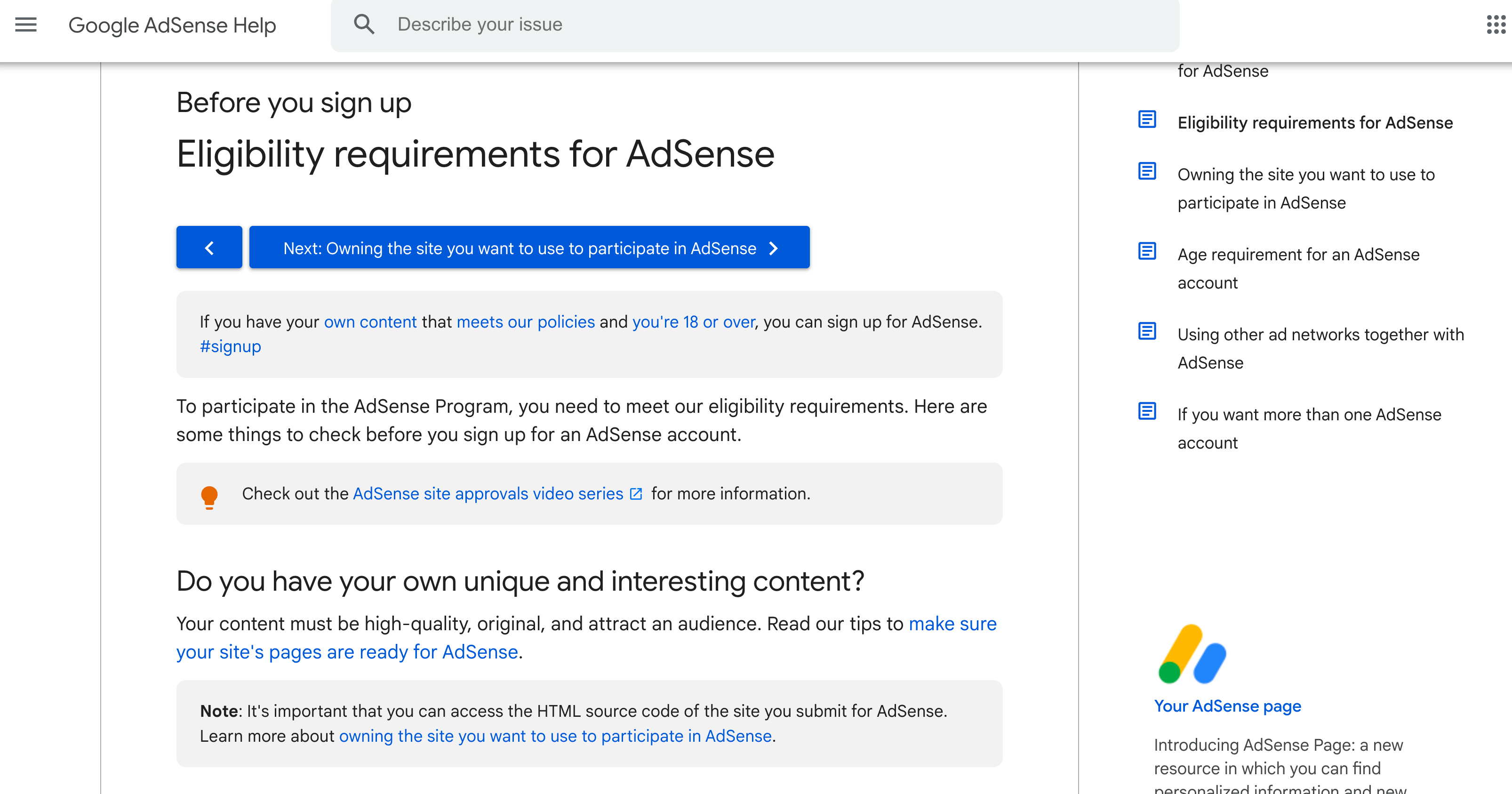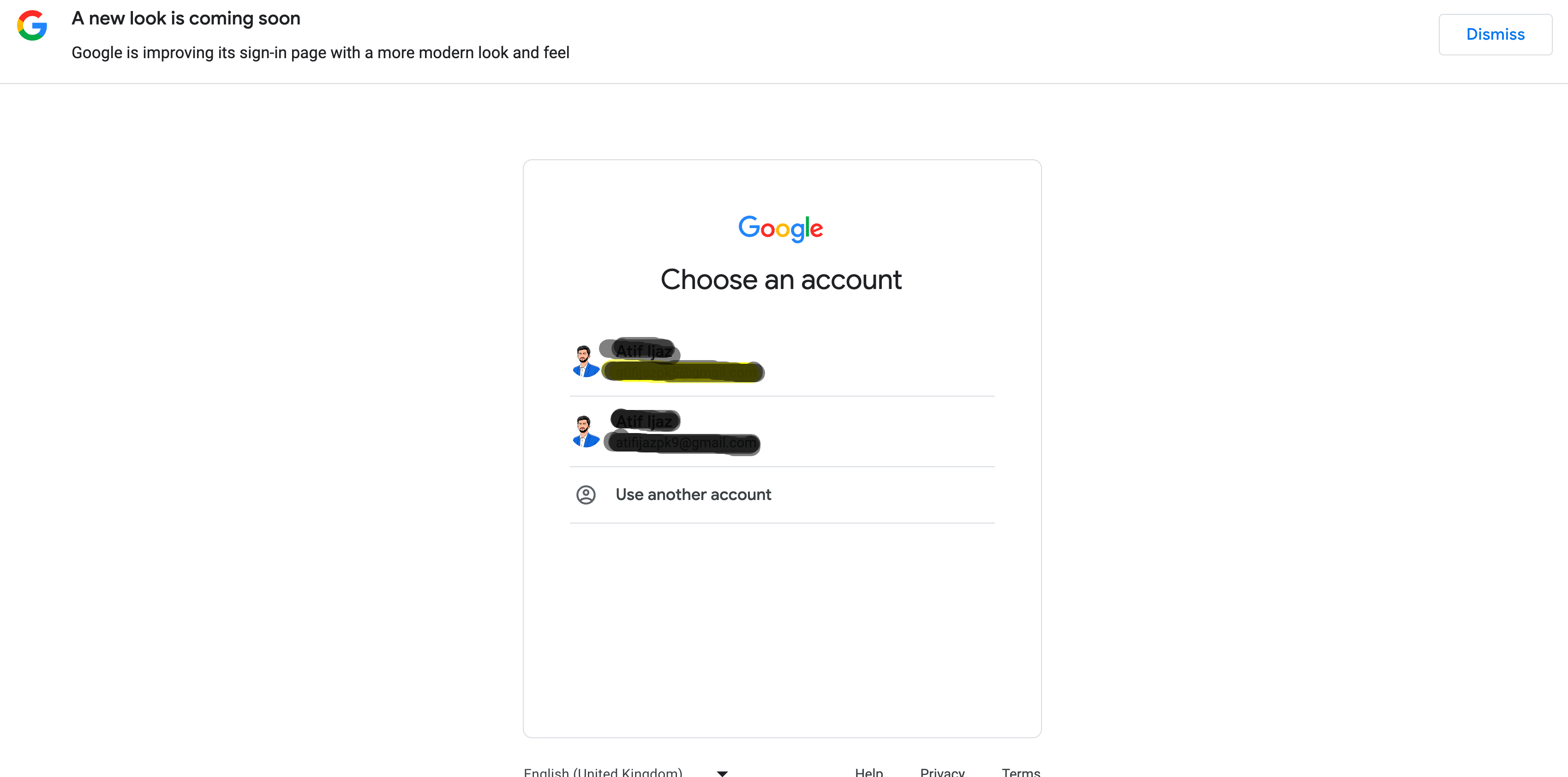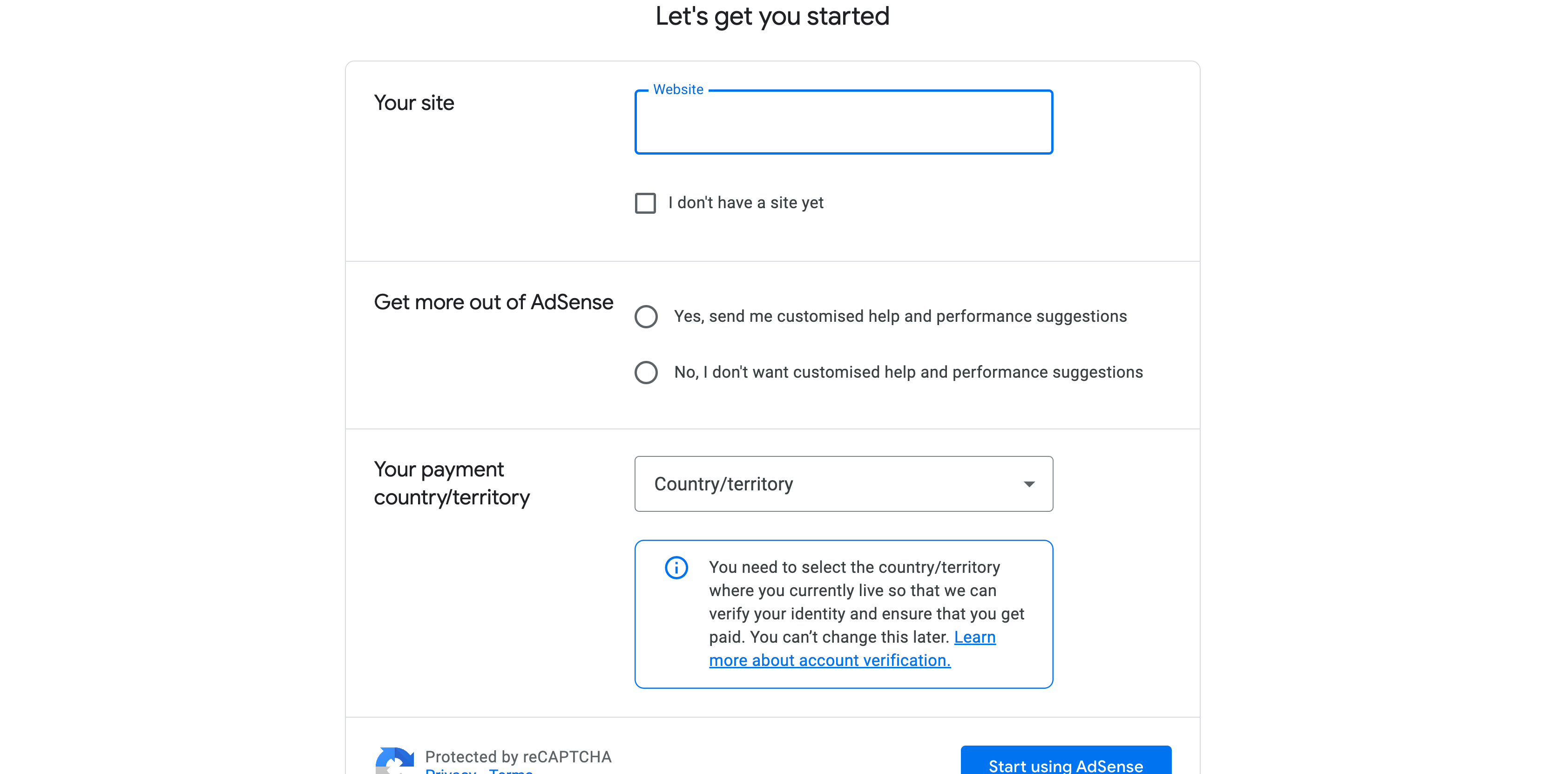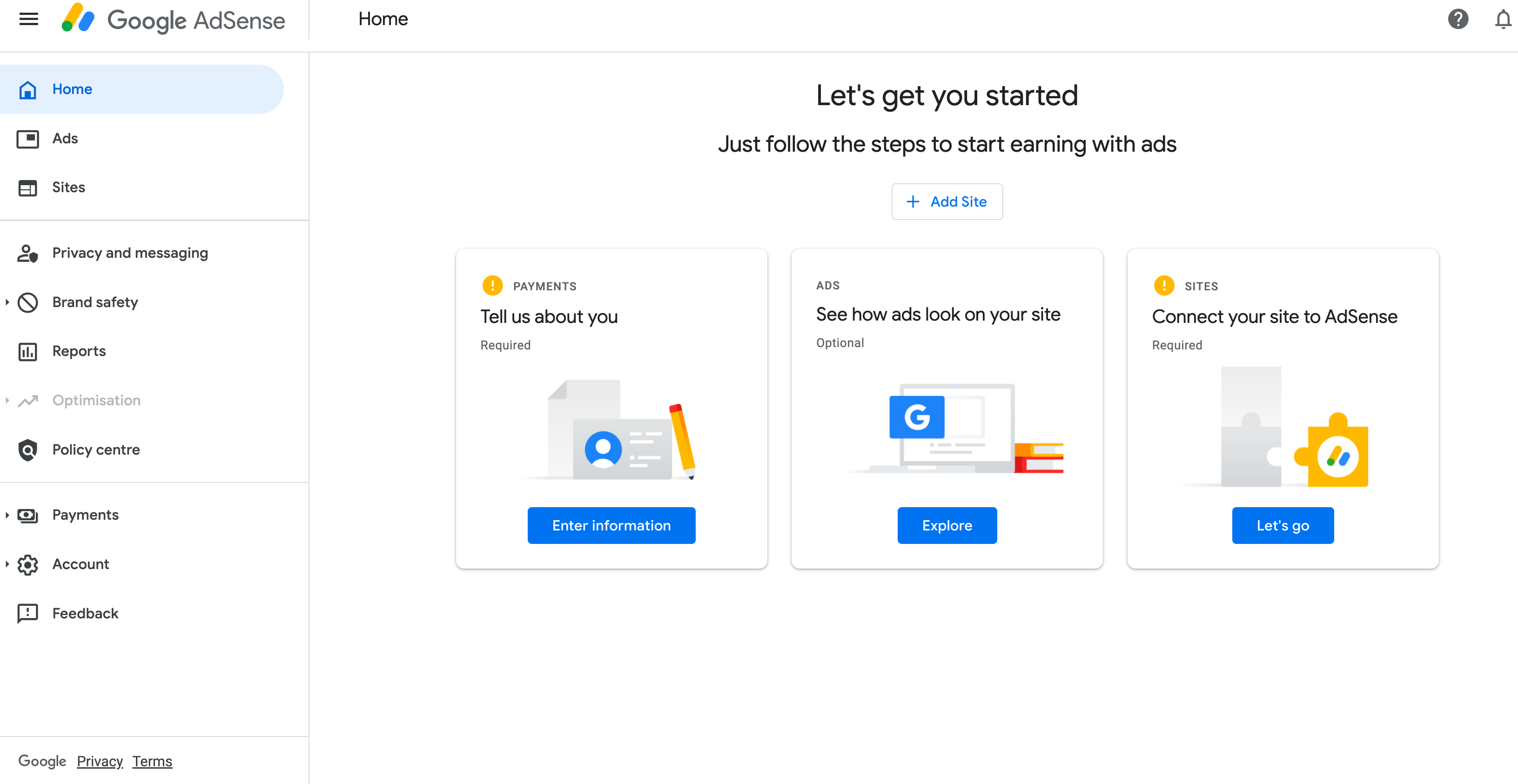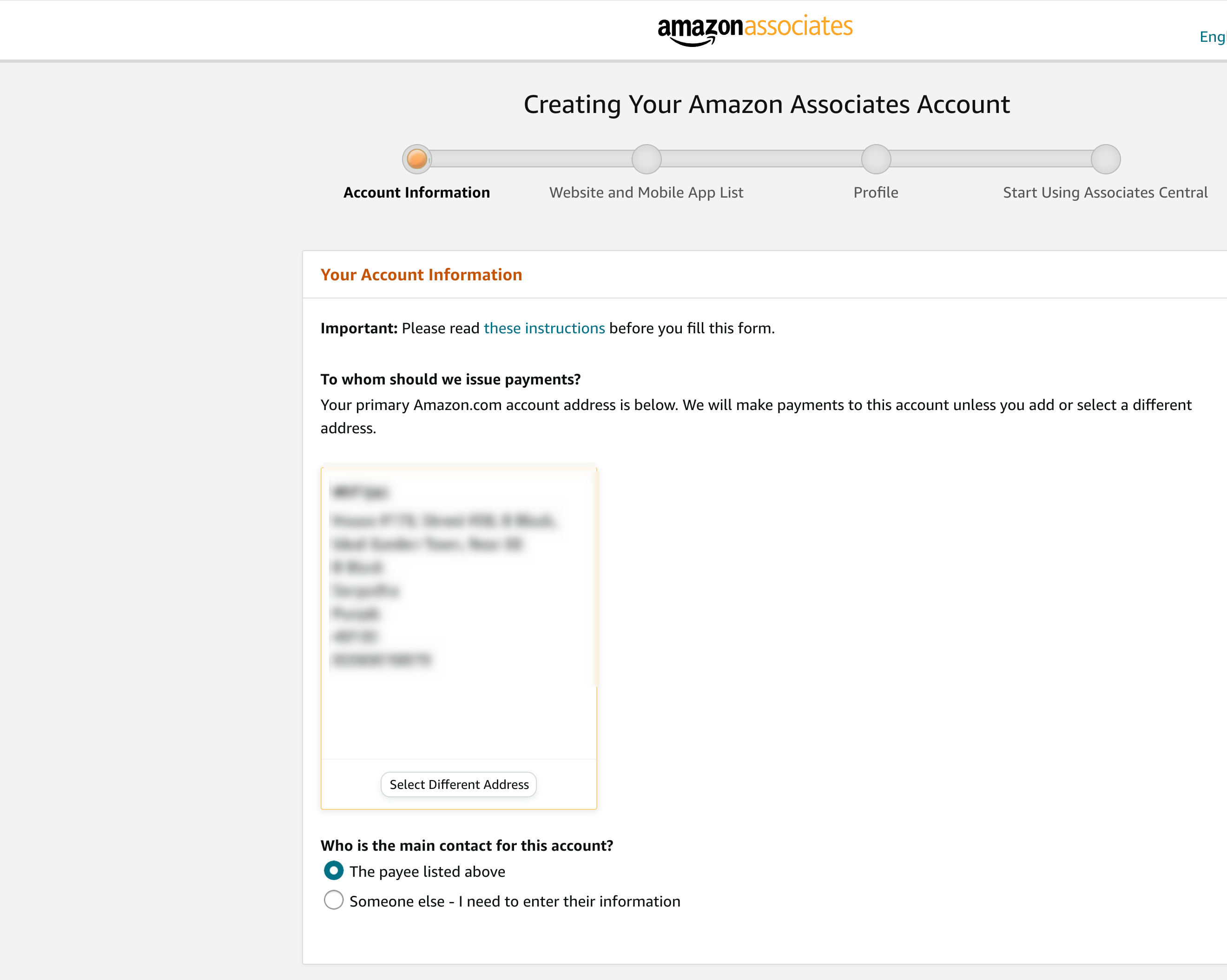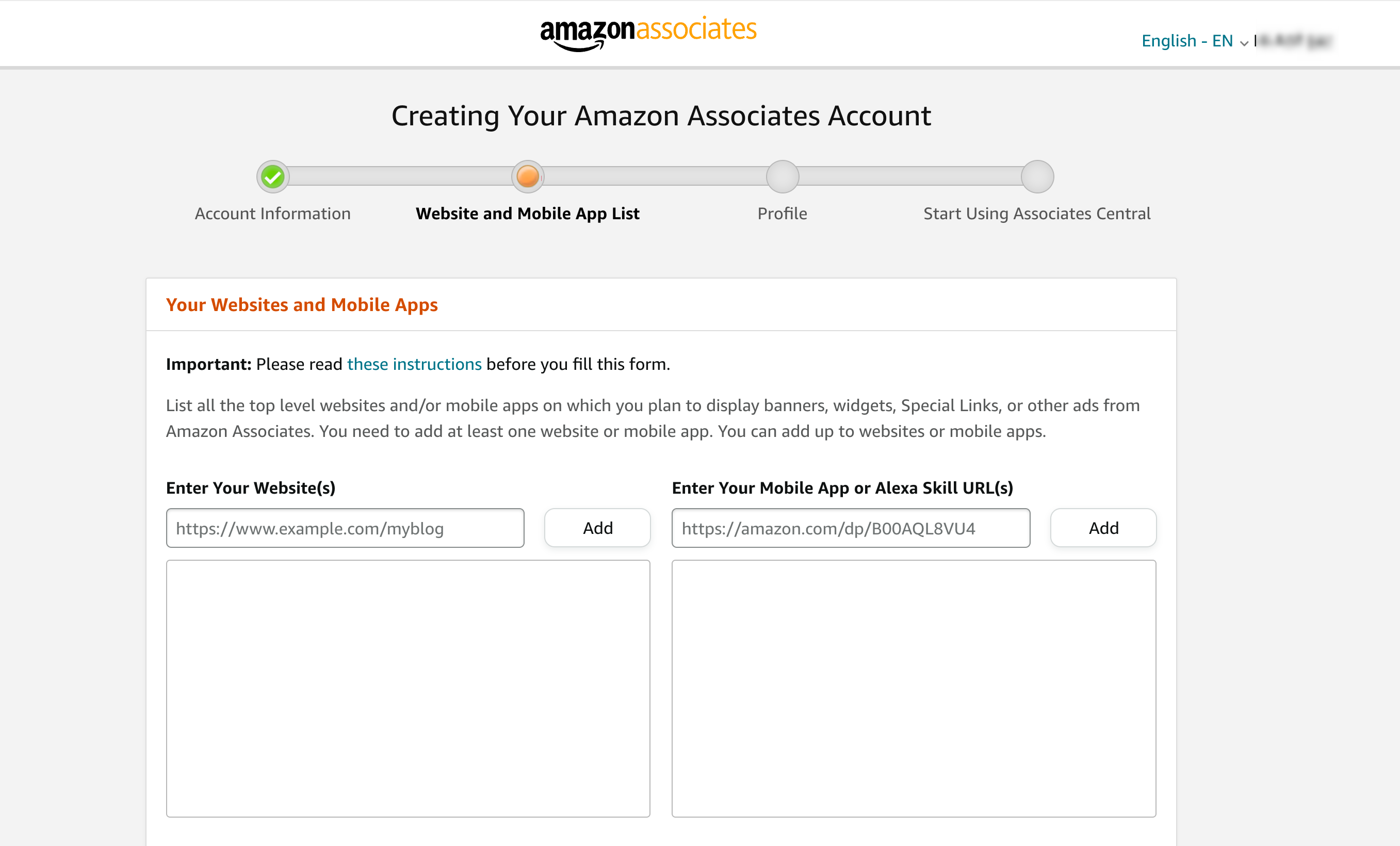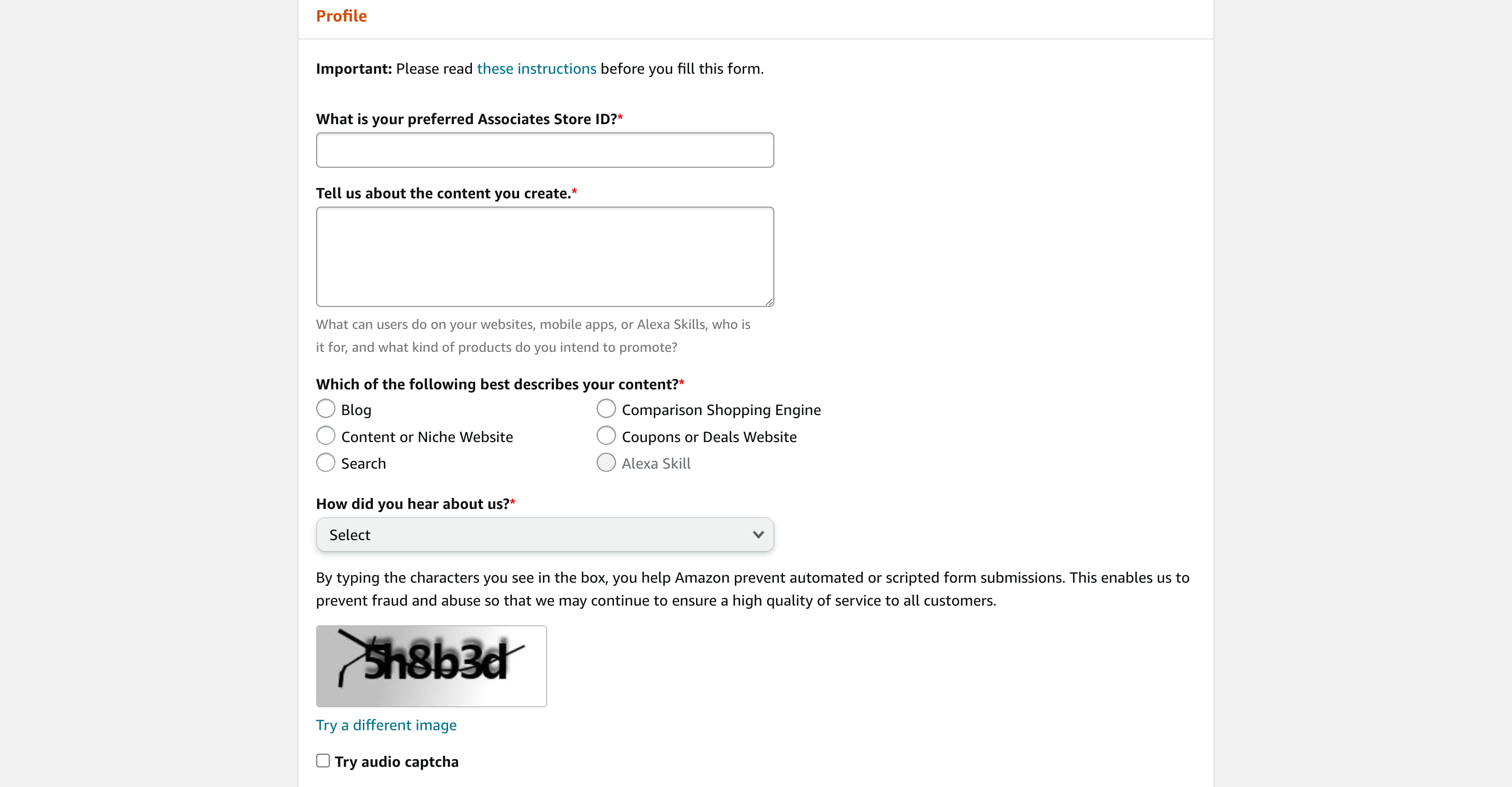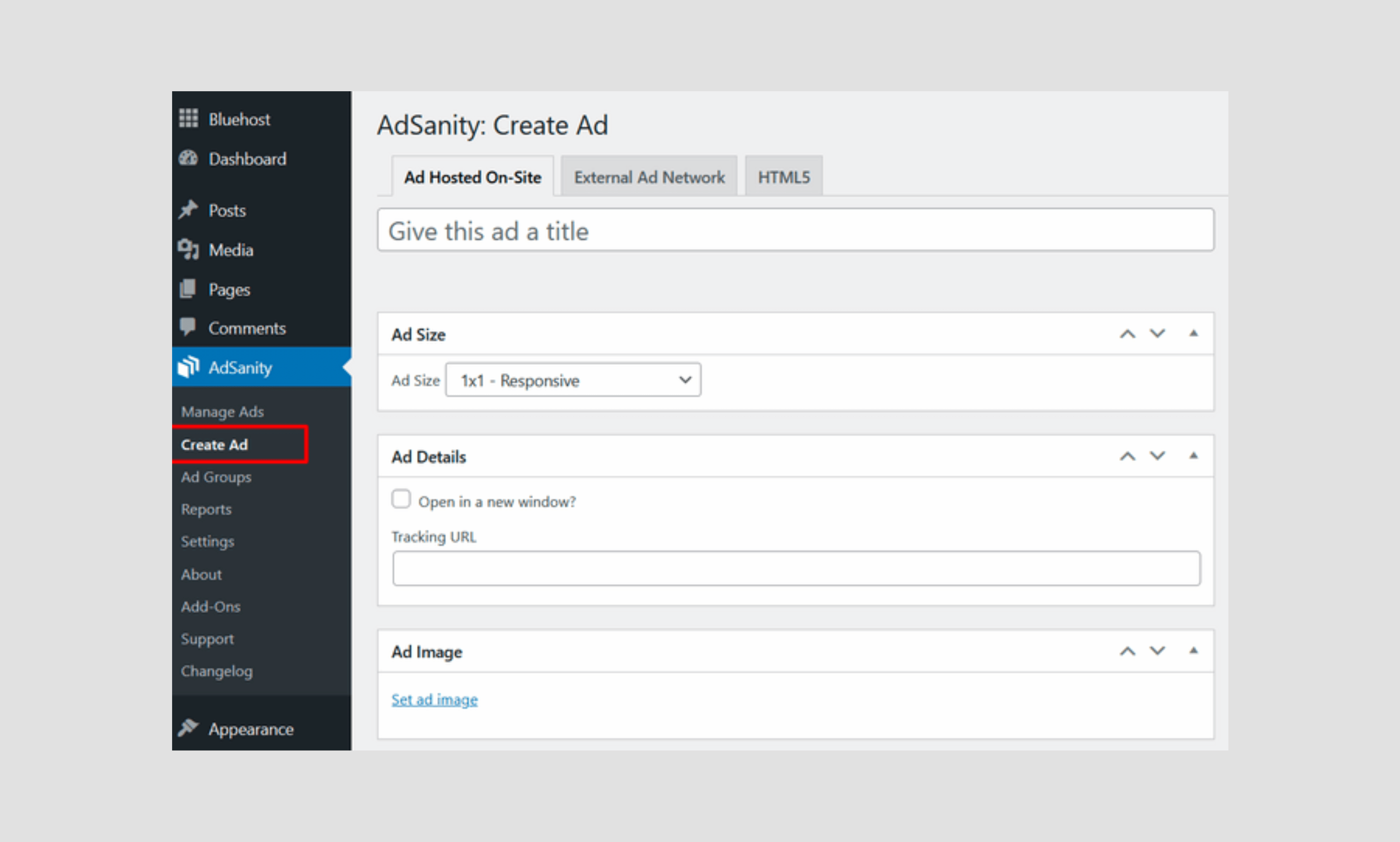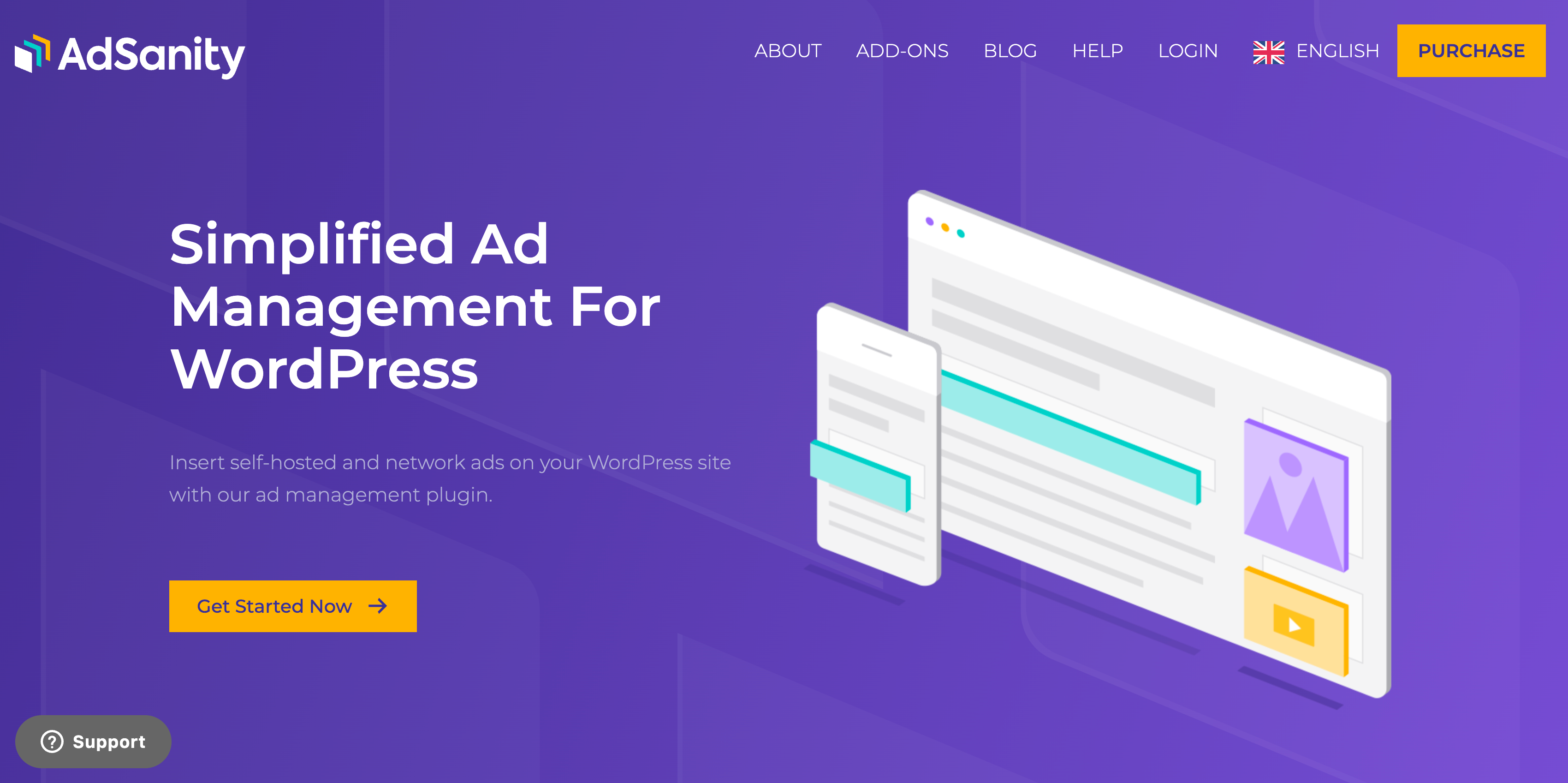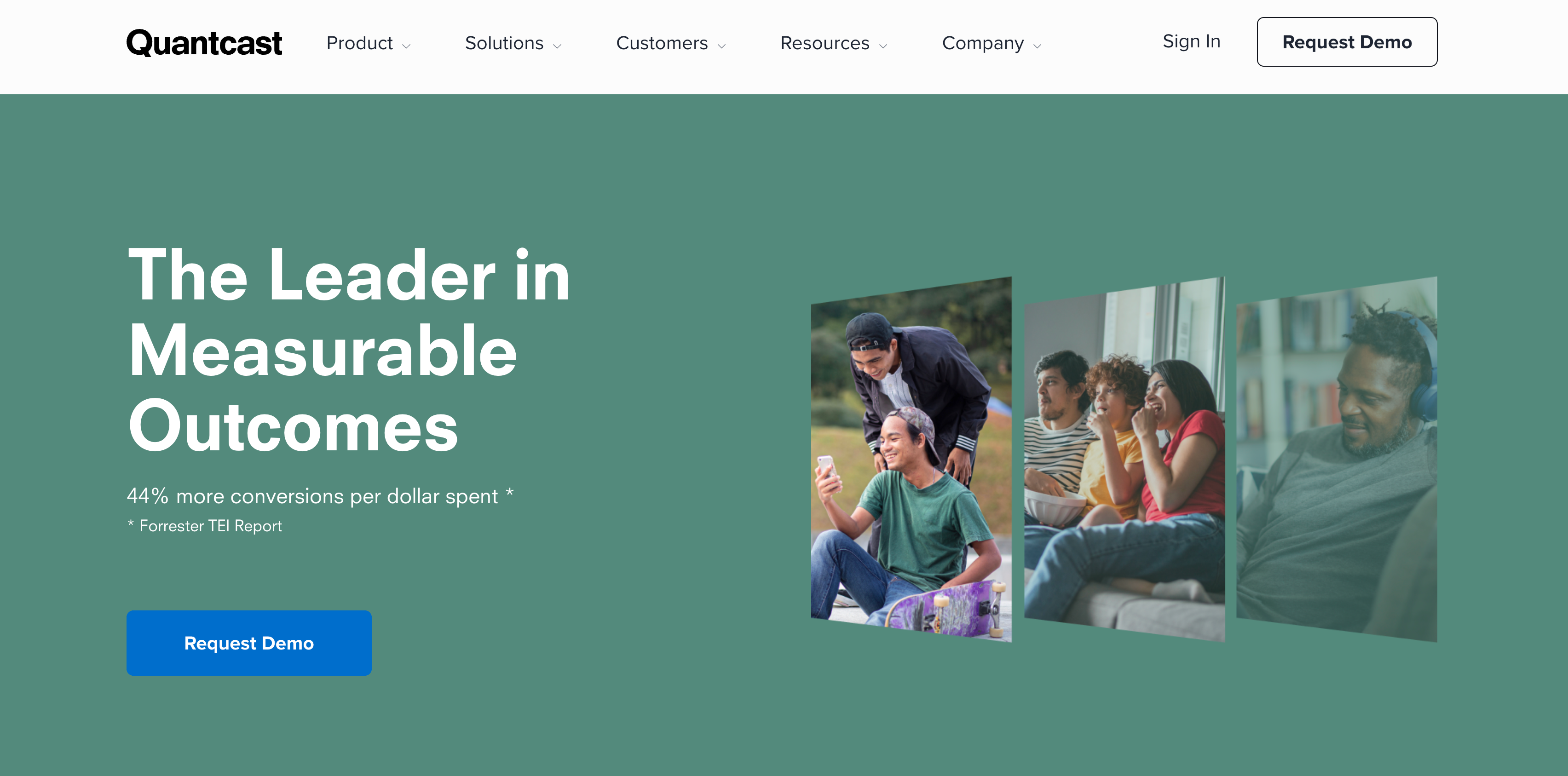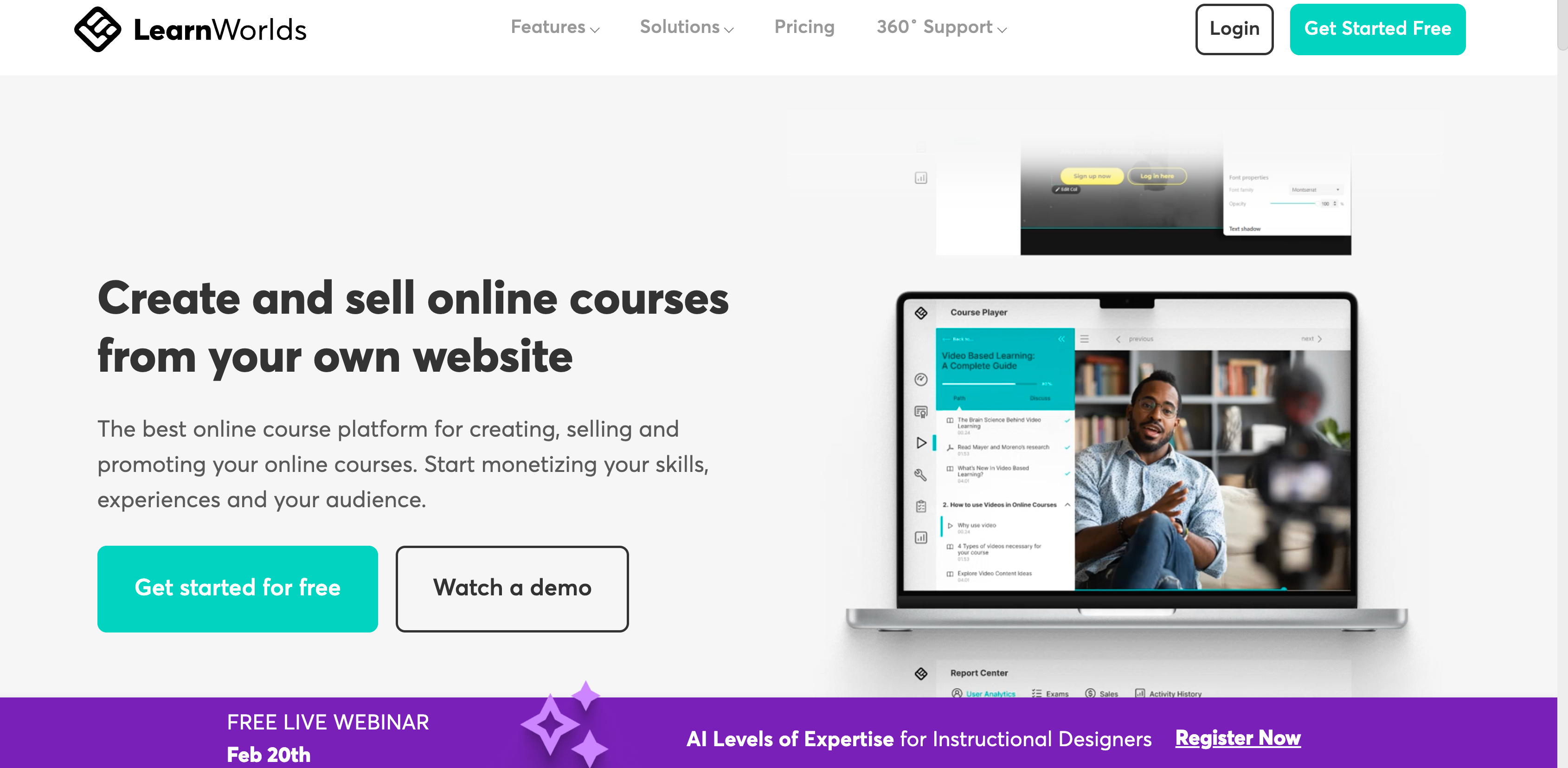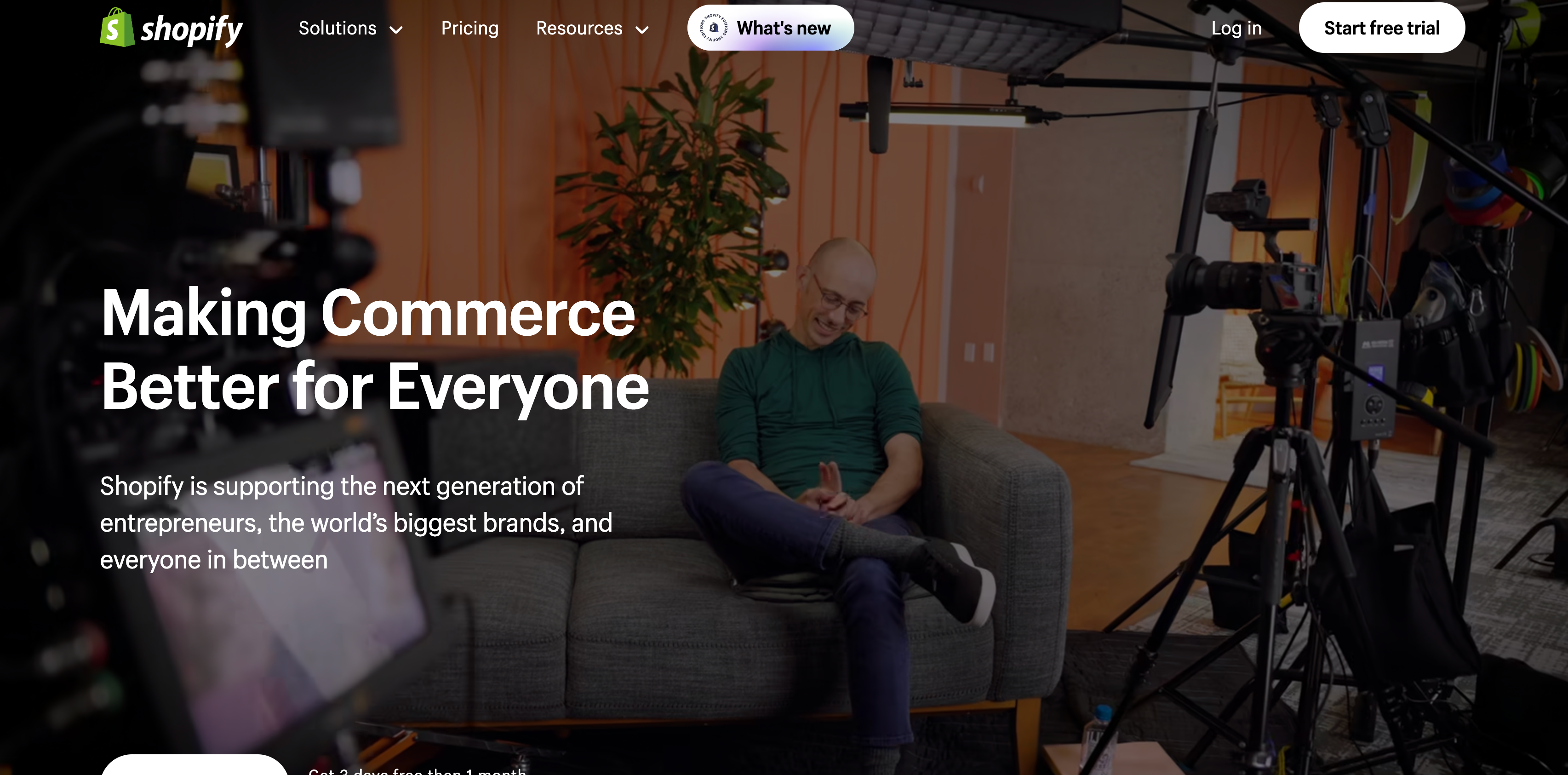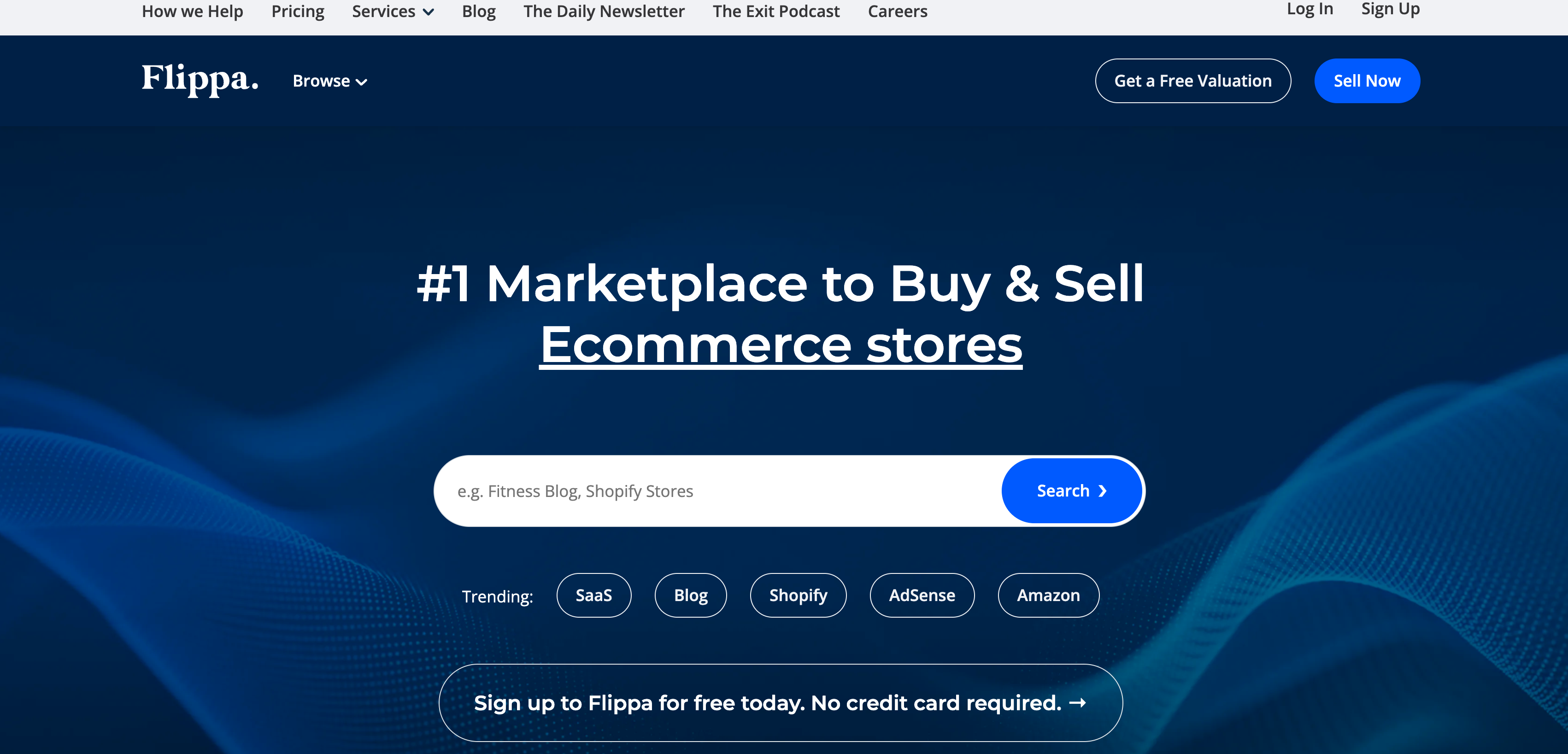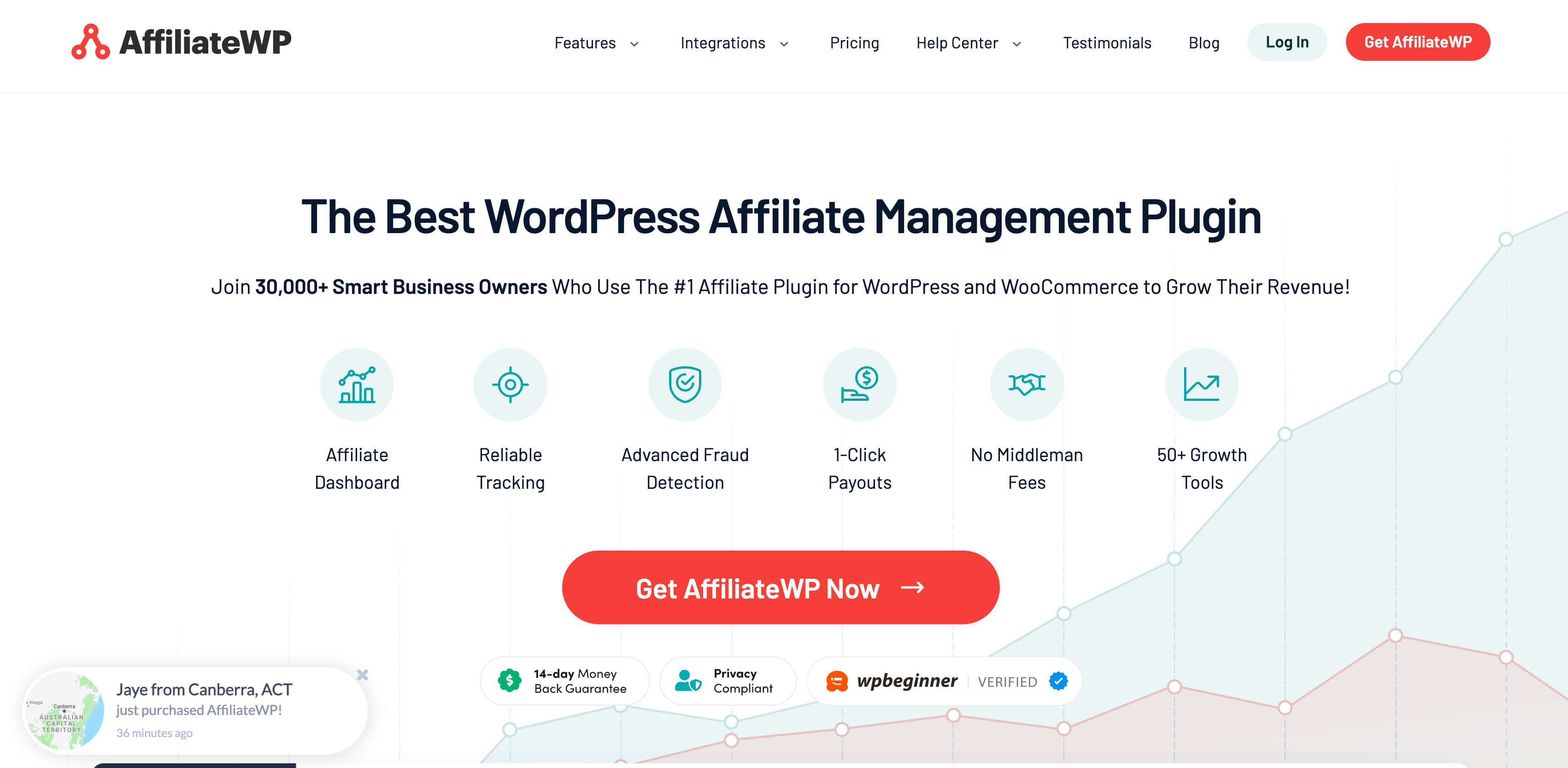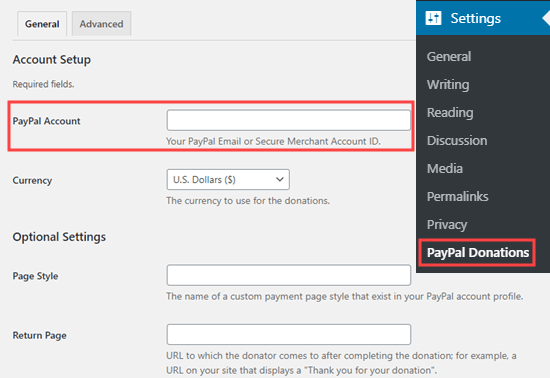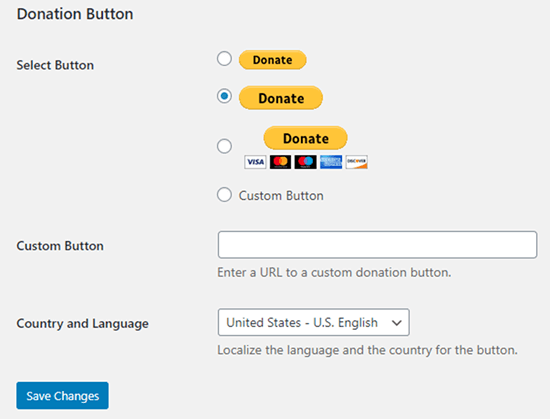Turning a hobby into a revenue stream has always been a dream for many. I remember the days when my website was just a canvas for my passions, a place where I shared my insights and experiences without a thought for profit. But as the digital landscape evolved, so did the opportunities for monetization. It’s a journey I’ve navigated firsthand, transforming my once humble blog into a thriving niche website that not only fuels my passion but also my wallet.
For many, the leap from hobby to revenue seems daunting. You’re not alone if you’ve ever wondered, “Can my passion project really generate income?” The digital realm is saturated, and standing out while finding the right monetization strategy can feel like searching for a needle in a haystack.
Without a clear guide, many talented individuals see their websites stagnate, unable to tap into the potential revenue streams. It’s frustrating to see your efforts go unrewarded, especially when you know the value you’re providing. The challenge isn’t just in creating content but in strategically positioning it to earn.
That’s where this guide comes in. Drawing from my own experiences and the latest industry insights, this guide is your roadmap to turning your passion into profit. With the global e-commerce market projected to hit $5,307.28 billion in 2028, the potential for niche websites has never been greater. Let’s dive into the strategies that will not only elevate your website but also ensure it becomes a sustainable source of income.
- What is Monetization?
- Why Monetize Your Niche Website?
- 12 Smart Ways to Turn Your Niche Website into a Money-Making Machine
- #1. Google AdSense
- #2. Amazon Affiliate
- #3. Renting Ad Space on Your Website
- #4. Direct Advertising
- #5. Selling Online Courses
- #6. Create Sponsored Content
- #7. Sell Products or Services
- #8. Create Membership Websites
- #9. Flipping Websites
- #10. Create Coupons with Affiliate Links
- #11. Simply Add "Hire Me" Page
- Why Have a "Hire Me" Page?
- How to Create an Effective "Hire Me" Page
- Tips for Maximizing the Impact of Your "Hire Me" Page
- #12. Accepting Donations
- Monetizing You Niche Website: Final Thoughts
What is Monetization?
Monetization, at its heart, it’s all about turning something into money. When we zoom into the world of niche websites, it’s the craft of transforming your site’s traffic and content into a steady flow of income. Think of it as leveraging what you love to do—sharing your unique content and connecting with your audience—to fill up your piggy bank.
Monetization is not about just throwing ads across your website and hoping for the best. Nope. It’s a strategic game:
- Understanding your audience: Who are they? What do they love about your site?
- Valuing your offer: What unique insights, products, or services are you providing?
- Diverse strategies: From affiliate marketing and sponsored content to selling digital products and memberships—there’s a whole universe of ways to earn.
- From Hobby to Profit: Realizing the potential of your niche website to support your financial dreams is a game-changer.
- Supplement Income or Full-Time Business?: Whether you’re looking to add a little extra to your monthly earnings or dive into a full-time venture, understanding monetization is your first step on this exciting journey.
Monetization is your key to unlocking a world where your passions not only bring joy but also financial rewards.
Why Monetize Your Niche Website?

Monetizing your niche website isn’t just about making money—it’s about unlocking the full potential of your digital presence. Here are some compelling benefits to consider:
- Multiple Revenue Streams: Affiliate marketing, display ads, and digital products offer varied sources of generating revenue. This diversity can provide financial security and stability, ensuring you’re not reliant on a single source.
- From Passion to Profit: Monetizing allows you to earn from doing what you love. It transforms your hobby into a viable business, aligning your work with your interests and passions.
- Value Addition: By carefully selecting monetization strategies, such as relevant affiliate products or unobtrusive ads, you can add value to your user’s experience rather than detract from it.
- Brand Expansion: Monetization strategies like creating your own products or offering premium content can significantly enhance your brand’s presence and authority in your niche.
- Achieve Financial Goals: Whether it’s earning a little extra on the side or building a full-time income, monetization can help you achieve your financial objectives and potentially lead to financial independence.
Monetizing your niche website offers a pathway to not just financial rewards but also enhances your brand, engages your audience more deeply, and solidifies your presence in the digital world. It’s about creating a sustainable ecosystem where your passion meets profit, driving both personal satisfaction and business growth.
12 Smart Ways to Turn Your Niche Website into a Money-Making Machine
Diving into the digital world with a niche website is like planting a seed in fertile soil. With the right strategies, you can nurture this seed into a flourishing tree, dripping with the fruits of your labor—aka cold, hard cash. But how do you transform your digital space from a passion project into a profitable powerhouse? The answer lies in monetization.
Monetization is the magic wand that turns your efforts into earnings. But it’s not about choosing just any strategy; it’s about selecting the right mix that resonates with your audience and amplifies your content’s value. From affiliate marketing to exclusive memberships, each method has its unique charm and potential.
In this guide, I’ll explore 12 dynamic niche website monetization methods. These strategies are your keys to unlocking a new realm of financial possibilities, turning your site into a beacon for both value and revenue. Ready to dive in? Let’s get started and turn your niche website into a thriving digital empire.

Google AdSense stands as a cornerstone in website monetization, offering a straightforward way for website owners to earn by displaying ads. This platform bridges the gap between advertisers looking to promote their products and website owners seeking to monetize their content. With AdSense, you can tap into a vast network of advertisers bidding for space on your site, turning your website’s traffic into a lucrative revenue stream.
Why Monetize Through Google AdSense?
- Ease of Use: AdSense is user-friendly, requiring no technical skills to get started. Its simplicity makes it an attractive option for new and small publishers.
- Flexibility: You can monetize multiple websites under one account, making it easier to manage your ad revenue streams.
- Auto Ads: This feature automatically places ads where they are likely to perform well, optimizing your earnings without extra effort on your part.
- Accessibility: It’s free to join, with no hidden fees, making it accessible to anyone looking to monetize their website.
- Diverse Ad Formats: AdSense offers various ad formats, including display, in-feed, and in-article ads, allowing for a better user experience and potentially higher earnings.
How to Do It
- Create a Gmail Account: If you don’t already have one, sign up for a Gmail account. This will be used to manage your AdSense and other Google services.
- Check Your Eligibility: Before applying, ensure your website complies with AdSense’s eligibility requirements. This includes being over 18 years old, having access to edit your website’s HTML, and ensuring your site has high-quality, original content.

- Apply for AdSense: Visit the Google AdSense website and click on the “Sign Up Now” button. Use your Gmail account to sign in.

- Enter Your Website Details: Fill in the application form with your website URL and select the language your content is in.
- Configure Your AdSense Settings: Provide your payment address and other necessary details. This information is crucial for receiving payments later on.
- Connect Your Site to AdSense: You’ll receive a piece of code to insert into the <head> section of your website. This code links your site to AdSense and allows Google to start displaying ads.

- Wait for Approval: After submitting your application, there will be a review process. Google AdSense will check if your website meets all the guidelines and requirements. This process can take anywhere from a few days to a couple of weeks.

- Set Up Ad Placements: Once approved, you can start placing ads on your site. You can choose to manually place ads or use the Auto Ads feature, which automatically places ads where they’re likely to perform best.
- Optimize Your Ads: Experiment with different ad formats and placements to see what works best for your audience and content. High-performing ads can significantly increase your earnings.
- Monitor Your Performance: Use the AdSense dashboard to track how your ads are performing. Pay attention to metrics like click-through rates (CTR) and earnings per click (EPC) to gauge success.
- Receive Payments: Once you reach the minimum payment threshold of $100, you can withdraw your earnings. Google AdSense offers various payment methods, including electronic funds transfer (EFT), checks, and Western Union Quick Cash, depending on your location.
- Comply with Policies: Continuously ensure that your website adheres to Google AdSense policies to avoid any issues or bans. Regularly update your content and stay informed about any changes to the AdSense program guidelines.
Setting up Google AdSense involves a straightforward application process, followed by strategic placement of ads on your site to start earning. Remember, the key to success with Google and other search engines is not just about placing ads but optimizing them for your audience to ensure a positive user experience while maximizing your revenue potential.

Amazon Affiliate, also known as Amazon Associates, is a program that allows you to earn commissions by referring customers to Amazon. When someone clicks on your affiliate link and makes a purchase, you get a piece of the pie. It’s a fantastic way to monetize your website or blog, especially if you’re passionate about recommending products that you love.
Why Monetize Through Amazon Affiliate?
- Wide Range of Products: Amazon’s vast inventory means you can find products related to almost any niche.
- Trustworthy Platform: Amazon is a trusted name in e-commerce, which can increase conversion rates.
- Easy to Integrate: Adding affiliate links to your content is straightforward, with various tools provided by Amazon to help.
- Earn on All Purchases: You earn commissions not just on the products you directly link to but on any other purchases made by the customer during their session.
- Performance-Based Rewards: The more sales you generate, the higher your commission rate can go.
How to Monetize Through Amazon Affiliate
- Create a Website or Blog: Start with a platform where you can publish content and place your affiliate links. This could be a website, blog, or even a YouTube channel.
- Sign Up for Amazon Associates: Visit the Amazon Associates homepage and click “Sign Up.” You’ll need to log in with your Amazon account or create one.

- Enter Account Information: Provide your account details, including the name, address, and phone number of the payee.

- Add Your Website or Blog: Input the URLs of your website(s), blogs, apps, or YouTube channels where you’ll be promoting Amazon products.

- Choose Your Store ID: Your store ID typically matches your primary website name. You’ll also describe what your websites aim to achieve and how you intend to drive traffic and generate income.

- Explain Your Traffic Generation Methods: Detail how you’ll attract visitors to your site, how you plan to use your website or apps to generate revenue, how you build links, and your monthly visitor count.
- Select Payment Method: Decide how you’d like to receive your earnings. You can choose direct deposit, Amazon gift card, or check.
- Create Amazon Affiliate Links: Once your account is approved, use the Amazon Associates dashboard to find products and generate affiliate links. You can then incorporate these links into your content.
- Promote Your Content: Drive traffic to your content through SEO, social media, email marketing, and other strategies to increase the chances of clicks and purchases through your affiliate links.
- Track Your Earnings and Optimize: Monitor your Amazon Associates dashboard to see how your links are performing. Use this data to adjust your strategy and improve your earnings over time.
By embarking on this journey with the Amazon Affiliate program, you’re not just opening a new revenue stream—you’re enhancing your platform’s value by connecting your audience with products that resonate with their interests and needs. The key to thriving in this space lies not only in the strategic placement of affiliate links but also in the authenticity of your recommendations and the quality of your engagement with your followers.
Renting ad space on your website is a classic yet effective way to monetize your digital real estate. By allocating spaces on your site for advertisements, you create a steady stream of income that grows with your audience. This method is especially lucrative for sites with high traffic volumes and a well-defined audience, making it an attractive platform for advertisers.
Why Monetize Through Renting Ad Space?
- Steady Income: Secure a consistent revenue stream that complements other monetization strategies.
- Control Over Advertisers: Choose which brands and products you want to feature, ensuring they align with your audience’s interests.
- Flexibility in Pricing: Set your own rates for ad space, based on your site’s traffic and the ad’s location.
- Enhanced User Experience: By selecting ads that are relevant to your audience, you enhance rather than detract from the user experience.
How to Sell Ad Space
- Assess Your Site’s Suitability: Ensure your site has a substantial amount of traffic and content that appeals to a specific audience or niche.
- Choose Ad Types: Decide whether you’ll offer CPC (Cost-Per-Click), CPM (Cost-Per-Thousand-Impressions), flat fee ads, or a combination.
- Set Up Your Ad Spaces: Identify strategic locations on your site for ads, such as the sidebar, header, or between blog posts, to maximize visibility and clicks.

- Determine Your Pricing: Set rates for different ad spaces based on their visibility and your site’s traffic volume. Consider offering discounts for longer-term ad placements.
- Create an “Advertise With Us” Page: Detail the types of ads you offer, your site’s demographics, traffic statistics, and how interested advertisers can get in touch.
- Use Ad Management Tools: Consider using plugins like AdSanity for WordPress to manage ad placements and rotations easily.

By strategically selling ad space into your website, you capitalize on your existing traffic and offer valuable opportunities for advertising networks to reach their target audience. This approach requires a balance between maximizing revenue and maintaining a positive user experience, ensuring that ads complement rather than clutter your site. As your site grows, so does the potential for this monetization method to become a significant source of income, reflecting the true value of your digital space.
Direct advertising offers a unique opportunity to work closely with brands and businesses that align with your website’s exclusive content and audience. By bypassing ad networks, you can negotiate directly with advertisers, offering them tailored ad spaces and campaigns. This approach not only maximizes your revenue potential but also ensures that the ads displayed are relevant to your audience, enhancing their overall experience on your site.
Why Monetize Through Direct Advertising?
- Higher Revenue Share: Keep 100% of the ad revenue, without having to pay a percentage to ad networks.
- Control Over Ad Content: Directly negotiate the types of ads that appear on your site, ensuring they align with your audience’s interests.
- Flexible Pricing and Terms: Set your own rates and terms, offering customized packages based on the advertiser’s needs.
- Build Relationships with Advertisers: Establish long-term partnerships with advertisers, leading to more stable and predictable revenue.
How to Monetize Through Direct Advertising
- Create a Dedicated Advertising Page: Make it easy for potential advertisers to find information on how to advertise on your site. Include traffic stats, audience demographics, and available ad formats.
- Develop a Media Kit: Your media kit should provide detailed information about your audience, including demographics, interests, and engagement metrics. It should also outline the types of ads you offer, pricing, and success stories or testimonials.
- Gather Audience Data: Use tools like Quantcast to collect detailed demographic and behavioral data about your audience. This information will be invaluable in convincing advertisers of the value of your ad space.

- Set Your Prices: Determine your rates for different ad formats and placements. Consider offering discounts for long-term or bulk ad purchases.
- Select an Ad Server: Choose an ad server that allows you to manage and serve ads efficiently. This tool should also enable you to fill unsold inventory with ads from networks like AdSense as a backup.
- Ensure Your Site Design is Modern and Responsive: A professional, modern website design signals to advertisers that you’re a serious partner. Make sure your site is also responsive, as mobile traffic is increasingly important.
- Explore Innovative Ad Formats: Beyond traditional banner ads, consider offering sponsored content, social media shoutouts, newsletter placements, and other creative online advertising solutions.
Direct advertising requires more legwork than using ad networks, but the rewards can be significantly higher. By offering tailored ad solutions to businesses that match your audience’s interests, you can create a more engaging experience for your visitors while maximizing your revenue potential. Remember, the key to success in direct advertising lies in understanding your audience deeply and building strong relationships with your advertising partners.

Selling online courses is a powerful way to share your knowledge, skills, and passion with the world while generating income. With the e-learning market projected to reach $325 billion by 2025, there’s never been a better time to create and sell online courses. Whether you’re an expert in a specific field, a skilled professional, or someone with valuable life experiences, your insights can help others achieve their goals and enrich their lives.
Why Monetize Through Selling Online Courses?
- Scalable Revenue: Create your course once and sell it to an unlimited number of students.
- Flexibility: Teach anything you’re passionate about, from academic subjects to hobbyist skills.
- Global Reach: Connect with students from around the world, breaking geographical barriers.
- Passive Income: Once your course is created, it requires minimal ongoing effort to continue earning.
How to Monetize Through Selling Online Courses
- Identify Your Niche: Choose a subject you’re knowledgeable and passionate about. Ensure there’s demand for your topic by researching existing courses and gauging interest.
- Understand Your Audience: Define your target audience. What are their goals, challenges, and preferences? This understanding will shape your course content and marketing strategy.
- Create Compelling Content: Develop a course outline that covers all necessary topics in a logical sequence. Use a mix of video, text, and interactive elements to cater to different learning styles.
- Choose the Right Platform: Decide whether to host your course on your own website or use an online course platform like LearnWorlds, Kajabi, or Udemy. Consider factors like control, cost, and features.

- Set Your Price: Determine a pricing strategy that reflects the value of your course. Consider offering different tiers or packages to cater to various budgets.
- Market Your Course: Utilize social media, email marketing, content marketing, and partnerships to promote your course. Engage with your audience and build anticipation before launch.
By following these steps, you can transform your expertise into a thriving online course business. Selling online courses not only allows you to earn income but also to make a meaningful impact by sharing your knowledge with those eager to learn. Remember, the success of your online course depends on the quality of your content, your understanding of your audience, and your ability to market effectively.
Creating sponsored content is a strategic way to monetize your website by partnering with brands and businesses. This method involves producing content that promotes a sponsor’s products or services in a way that resonates with your audience. It’s a win-win: brands get their message across to a targeted audience, and you earn revenue for your creative efforts.
Why Monetize Through Sponsored Content?
- Direct Revenue: Collaborate directly with brands for a fixed fee, securing a predictable income stream.
- Audience Trust: Craft content that aligns with your audience’s interests, maintaining trust while introducing them to relevant products or services.
- Creative Control: You have the freedom to choose which brands to work with, ensuring the sponsored content fits seamlessly with your site’s theme and values.
How to Monetize Through Sponsored Content

- Build Your Platform: Establish a strong online presence with quality content that attracts a loyal audience. The more engaged your audience, the more attractive your site will be to potential sponsors.
- Identify Potential Sponsors: Look for an ad network that share your audience’s interests and values. These could be companies whose products or services you’ve already mentioned or that fit naturally within your content.
- Create a Media Kit: Develop a comprehensive media kit that showcases your website’s traffic stats, audience demographics, engagement rates, and success stories. This will serve as your pitch to potential sponsors.
- Set Your Rates: Determine how much you’ll charge for sponsored content. Consider factors like the effort involved, the exclusivity of the content, and your site’s reach.
- Promote Sponsored Content Opportunities: Make it known that you’re open to sponsored content collaborations. You can do this through your website, social media channels, and networking events.
- Produce High-Quality Sponsored Content: Work closely with the sponsor to create content that feels authentic and provides value to your audience. Whether it’s a blog post, video, or social media update, ensure it meets your usual standards of quality.
- Disclose Sponsorships: Always be transparent with your audience about sponsored content. Use clear disclosures to maintain trust and comply with legal requirements.
- Measure and Report Results: Provide sponsors with detailed reports on the performance of the sponsored content. This could include metrics like views, engagement rates, and click-through rates to the sponsor’s website.
Sponsored posts can be a lucrative monetization strategy when done right. It allows you to leverage your creative skills and audience trust to generate income while introducing your followers to products and services that may benefit them. Remember, the key to successful sponsored content is maintaining the balance between promotional and valuable, engaging content.
Selling products or services directly from your website is a direct path to monetization. This approach allows you to leverage your site’s traffic to generate sales, offering anything from physical goods to digital products or professional services. With the right strategy, you can transform your website into a bustling online store.
Why Monetize Through Selling Products or Services?
- Direct Revenue: Generate income directly from your audience without intermediaries.
- Full Control: You decide what to sell, how to price it, and how to present it to your audience.
- Build Your Brand: Selling your own products or services helps establish your brand identity and credibility.
How to Do It
- Identify What You’ll Sell: Decide whether you’ll offer physical goods, digital products, services, or a combination. Consider what aligns best with your brand and what your audience is most likely to purchase.
- Choose a Platform: Select an ecommerce platform that suits your needs. Shopify, for example, offers a comprehensive solution for building an online store, including web hosting, a custom domain, and a range of customizable templates.

- Set Up Your Online Store: Customize your store’s design to reflect your brand. Add product descriptions, images, and prices. Ensure your store is easy to navigate and optimized for a smooth shopping experience.
- Select a Payment Processor: Integrate a payment gateway that supports your preferred payment methods. This could include credit cards, PayPal, or other online payment systems. Ensure the checkout process is secure and user-friendly.
- Market Your Products or Services: Use SEO, social media marketing, email campaigns, and content marketing to drive traffic to your store. Consider running promotions or discounts to attract first-time buyers.
- Fulfill Orders Efficiently: Develop a system for processing orders, managing inventory, and shipping products. For digital products or services, ensure delivery is automated and seamless.
- Provide Excellent Customer Service: Offer support through email, chat, or phone. Address customer inquiries promptly and resolve any issues to ensure a positive shopping experience.
Selling products or services on your website can be highly rewarding, offering the potential for significant revenue and the opportunity to deepen your relationship with your audience. By focusing on quality, customer service, and effective marketing, you can build a successful online business that thrives on direct sales.

Creating a membership website is a fantastic way to build a community, offer exclusive content, and even generate revenue. Whether you’re looking to offer free memberships as a loyalty perk or charge for premium access, setting up a membership site can be straightforward with the right approach.
Why Create a Membership Website?
- Engage Your Audience: Keep your visitors coming back with exclusive content and community features.
- Generate Revenue: Charge for premium memberships or offer exclusive products and services to members.
- Build a Community: Foster a sense of belonging and loyalty among your users, turning them into advocates for your brand.
How to Create Membership Websites
- Define Your Audience and Goals: Understand who your site is for and what you want to achieve. Are you aiming to educate, entertain, provide a service, or sell products? Knowing your audience’s needs and interests is crucial.
- Choose Your Membership Model: Decide if you’ll offer free memberships, paid subscriptions, or a mix of both. Consider different tiers of membership, each with its own set of benefits and content access levels.
- Select the Right Platform: Platforms like Wix, Squarespace, and WordPress offer robust features for building membership sites. Consider your technical skills, budget, and specific needs when choosing.
- Plan Your Content: Content is key to attracting and retaining members. Plan what exclusive content or perks you’ll offer, such as articles, videos, courses, events, or discounts. Ensure your content aligns with your audience’s interests and your site’s goals.
- Set Up Your Site: Use your chosen platform to build your site. Customize the design to match your brand, set up membership levels, and add content. Ensure the sign-up process is straightforward and the user experience is smooth.
- Implement Payment and Subscription Management: If charging for memberships, integrate a payment gateway and set up subscription management. Offer multiple payment options and ensure the process is secure and user-friendly.
- Promote Your Membership Site: Use email marketing, social media, SEO, and other channels to attract visitors and convert them into members. Highlight the benefits of joining your community and the exclusive content they’ll access.
- Engage and Grow Your Community: Regularly update your content, interact with members through forums or social media, and gather feedback to improve your site. Consider member-only events or challenges to keep the community active and engaged.
Creating a membership website can be a rewarding venture, offering a unique way to connect with your audience, provide value, and build a loyal community. By carefully planning your strategy and leveraging the right tools, you can create a successful membership site that meets your goals and delights your members.

Flipping websites is akin to the real estate flip but in the digital domain. It involves purchasing underperforming websites, enhancing their value, and selling them for a profit. This venture requires minimal initial investment and can yield significant returns if executed correctly.
Why Flip Websites?
- Low Entry Barrier: The simplicity of the business model makes website flipping accessible, even for those with little to no entrepreneurship experience.
- Minimal Initial Investment: Starting a website from scratch or acquiring an existing one can be done with a relatively small budget, making it an attractive option for many.
- High Demand for Quality Websites: As finding high-performing websites becomes increasingly challenging, there’s a growing market willing to pay premium prices for sites that demonstrate strong performance.
- Potential for High ROI: With the right improvements, a flipped website can significantly increase in value, offering the possibility of a lucrative payout.
- Flexibility and Creativity: Flipping websites allows for creative freedom in improving and marketing the site, providing a satisfying and potentially profitable project.
How to Do Flip a Website
- Identify a Website: Look for a website with potential for improvement. Consider factors like niche, content quality, and existing traffic.
- Acquisition: Purchase the website. Platforms like Flippa can facilitate this process, offering a marketplace for buying and selling websites.

- Transfer Ownership: Ensure all aspects of the website, including domain, content, and associated accounts, are legally transferred to you.
- Improve the Website: Conduct a thorough audit and begin enhancing the site’s content, design, SEO, and monetization strategies to increase its value.
- Sell the Website: Once improvements have been made and the site’s performance has increased, list it for sale, again using platforms like Flippa or through direct negotiation with potential buyers.
Flipping websites can be an exciting and profitable venture for those willing to invest the time and effort into transforming an underperforming site into a valuable digital asset. With patience, skill, and a bit of luck, website flipping can become a rewarding business.
Creating coupons with affiliate links is a strategic approach to affiliate marketing, offering a unique way to track sales and commissions through discount codes. This method not only incentivizes purchases but also enhances the affiliate marketing experience by providing tangible value to customers.
Why Use Affiliate Coupon Marketing?
- Boosts Conversion Rates: Coupons are a proven method to increase sales, as they offer immediate value to customers.
- Enhances Affiliate Motivation: Affiliates are more likely to promote your products enthusiastically when they can offer exclusive discounts.
- Tracks Performance Efficiently: Coupon codes allow for easy tracking of sales and performance, directly attributing sales to specific affiliates.
- Expands Marketing Reach: By leveraging affiliates’ networks, you can reach a wider audience without increasing your direct marketing costs.
- Strengthens Customer Loyalty: Customers who use affiliate coupons are likely to feel they’ve received added value, enhancing their loyalty to your brand.
How to Set Up Affiliate Coupon Marketing
- Choose the Right Platform: Opt for an affiliate management system that supports coupon code tracking, such as AffiliateWP for WordPress websites.

- Install and Configure Your Affiliate Plugin: After selecting your platform, install the affiliate management plugin and complete the setup wizard to integrate it with your e-commerce system.
- Create Unique Coupon Codes: Generate unique discount codes within your e-commerce platform (e.g., WooCommerce) for each affiliate. These codes should offer a clear value, such as a percentage off or a fixed discount.
- Assign Coupons to Affiliates: In your affiliate management system, assign each unique coupon code to the corresponding affiliate. This ensures that sales made with these codes are accurately tracked and attributed.
Bonus Tips for Success
- Use Vanity Coupon Codes: Allow affiliates to create personalized coupon codes. This can make the discount feel more exclusive and tailored, potentially increasing its appeal.
- Educate Your Affiliates: Provide your affiliates with best practices on how to effectively promote their coupon codes, including social media strategies and content marketing tips.
- Offer Timely Discounts: Align coupon promotions with seasonal sales, holidays, or special events to maximize their impact and relevance.
Affiliate coupon marketing is a powerful tool in the affiliate marketer’s arsenal, offering a win-win scenario for affiliates, customers, and merchants alike. By following these steps, you can effectively implement and benefit from this strategy, driving sales while enhancing your affiliate relationships.
Creating a “Hire Me” page on your website is a strategic move for freelancers, consultants, and anyone looking to offer their services directly through their site. This page not only showcases your skills and experiences but also serves as a direct point of contact for potential clients. Here’s how to make your “Hire Me” page stand out and effectively convert visitors into clients.
Why Have a “Hire Me” Page?
- Showcase Your Expertise: Clearly display your skills, specialties, and areas of expertise to attract the right clients.
- Build Trust: Share testimonials, case studies, and a portfolio of your work to build credibility and trust with potential clients.
- Streamline Client Acquisition: Provide a straightforward way for clients to understand your services and how to engage with you, simplifying the process of starting a new project.
- Personalize Your Pitch: Tailor your message to speak directly to your ideal client, highlighting how you can solve their specific problems.
- Increase Visibility: A dedicated page improves your website’s SEO, making it easier for potential clients to find you through search engines.
How to Create an Effective “Hire Me” Page

- Introduction: Start with a brief introduction about yourself and what you do. Make it clear and compelling, ensuring it resonates with your target audience.
- Services Offered: List the services you provide. Be specific about what you can do and how it benefits your clients. If applicable, you can also include different packages or tiers of service.
- Portfolio and Case Studies: Show off your best work. Include a portfolio if you’re in a creative field, or detailed case studies that demonstrate your impact in previous roles or projects.
- Testimonials and Reviews: Add testimonials from past clients to provide social proof of your expertise and the quality of your work.
- Call to Action (CTA): Make it easy for potential clients to contact you. Include a contact form directly on the page or provide your email address and phone number. Make sure your CTA is clear and encourages visitors to take the next step.
- FAQ Section: Address common questions upfront. This can help overcome any objections or hesitations potential clients might have.
- Rates and Availability: If appropriate for your industry, consider listing your rates or at least providing a range. This can help filter inquiries to those who are serious and within your target budget.
- Personal Touch: Add a personal element to your page, whether it’s a photo of yourself, a brief story about why you do what you do, or a video introduction. This helps clients feel a connection to you.
Tips for Maximizing the Impact of Your “Hire Me” Page
- SEO Optimization: Use relevant keywords throughout your “Hire Me” page to improve its visibility in search engine results.
- Update Regularly: Keep your page updated with your latest work, testimonials, and any changes in your services or rates.
- Promote Your Page: Include a link to your “Hire Me” page in your blog posts, social media profiles, and email signature to drive traffic to the page.
- Track Performance: Use analytics to track how visitors interact with your page. Look at metrics like page views, time spent on the page, and conversion rates to understand what’s working and what can be improved.
A well-crafted “Hire Me” page can significantly enhance your online presence and attract more clients. By following these guidelines, you can create a page that not only showcases your skills and experiences but also clearly communicates the value you bring to potential clients.

Accepting donations on your WordPress site can be a straightforward way to support your projects, causes, or content creation. PayPal, being one of the most trusted and widely used payment platforms, offers a simple solution for integrating a donate button on your site. Here’s how you can do it.
Why Accept Donations?
- Support Costs: Donations can help cover the running costs of your website or project.
- Fundraising: For non-profits, donations are essential for supporting their causes and initiatives.
- Community Support: Allows your audience to contribute directly to your work, fostering a sense of community and support.
- Flexibility: Donations give you financial support without the need for advertising or selling products/services.
- Simplicity: Setting up a donation system can be straightforward, especially with tools like PayPal.
How to Add a PayPal Donate Button in WordPress
- Create or Log Into Your PayPal Account: Before you start, ensure you have a PayPal account set up to receive donations.

- Use a WordPress Plugin: The simplest method to add a PayPal donate button is by using a WordPress plugin. Plugins like “Donations via PayPal” or “WPForms” allow you to integrate a donate button or form on your site without coding.
- Donations via PayPal Plugin: Install and activate this plugin, then configure it by entering your PayPal email address and setting up your currency, return page (thank you page), and optional settings like donation amount and purpose.
- WPForms with PayPal Addon: If you’re looking for a more customizable solution, WPForms allows you to create a donation form that integrates with PayPal. This method provides more flexibility in terms of form fields and design but requires the WPForms Pro version.
- Manually Add a PayPal Donate Button: For those who prefer not to use a plugin or need a simple button without additional fields, PayPal offers a direct method to create and add a donate button.
- Log into your PayPal account and navigate to the PayPal Buttons section.
- Select the “Donate” button type and follow the steps to customize your button.
- Once created, PayPal will provide you with a code snippet. You can add this code to your WordPress site directly in a post, page, or widget area using the Custom HTML block or widget.

- Customize Your Donation Button: Whether using a plugin or the manual method, you can customize the appearance of your donate button to match your site’s design. PayPal offers several button styles, or you can use your own image.
- Promote Your Donation Option: Make sure your visitors are aware of the option to donate by placing your donate button in visible locations, such as your sidebar, footer, or within relevant content.
Tips for Maximizing Donations
- Be Transparent: Clearly communicate how donations will be used to encourage trust and transparency.
- Offer Incentives: Consider offering small rewards or recognition for donations, such as shoutouts on social media or exclusive content.
- Thank Your Donors: Always express gratitude to your donors, either through automated thank-you messages or personalized notes.
Accepting donations can provide a valuable revenue stream for your website or cause. By leveraging PayPal and WordPress plugins, you can set up a donation system that’s both user-friendly and effective.
Monetizing You Niche Website: Final Thoughts
In wrapping up my comprehensive guide on monetizing your niche website, it’s clear that the digital landscape offers a plethora of opportunities for website owners to generate revenue. From displaying ads and affiliate marketing to selling digital products and accepting donations, each method comes with its unique set of advantages and considerations.
Key Takeaways
- Diversify Your Revenue Streams: Don’t rely solely on one monetization strategy. Explore various methods to find what works best for your niche, audience, and content.
- Understand Your Audience: Tailoring your monetization approach to fit your audience’s preferences and behaviors is crucial. Engage with your audience to learn what they value and are willing to pay for.
- Quality Content is King: Regardless of the monetization strategy you choose, high-quality, valuable content is fundamental. It attracts and retains visitors, builds trust, and increases the likelihood of conversion.
- Be Transparent and Ethical: Clearly disclose any affiliations, sponsored content, or advertisements. Maintaining transparency not only adheres to legal requirements but also fosters trust with your audience.
- Test and Optimize: Monetization is not a set-it-and-forget-it endeavor. Continuously test different strategies, placements, and offerings. Use analytics to guide your decisions and optimize for better results.
Moving Forward
As you embark or continue on your journey to monetize your niche website, remember that patience and persistence are key. Monetization success doesn’t happen overnight. It requires time, experimentation, and adaptation to changing trends and audience needs.
Stay informed about the latest in digital marketing, SEO, and content creation. These fields are constantly evolving, and staying up-to-date can provide you with new ideas and strategies to enhance your monetization efforts.
Lastly, don’t lose sight of why you started your website. Passion for your niche, genuine engagement with your audience, and a commitment to providing value are the foundation upon which successful monetization is built.
Conclusion
Monetizing your niche website is a journey that combines creativity, strategic planning, and a deep understanding of your audience. By leveraging the right mix of monetization strategies, continuously optimizing your efforts, and staying true to your content’s value, you can turn your niche website into a profitable venture.
Remember, the goal is not just to make money but to create a sustainable business that brings value to both you and your audience. Here’s to your success in monetizing your niche website!
Related Content:

